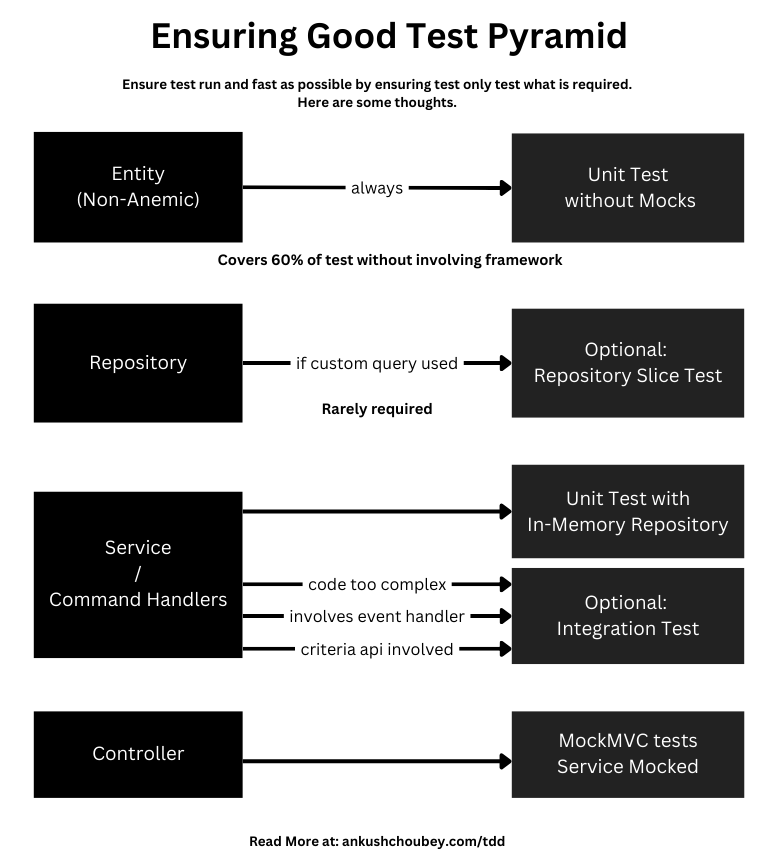· 3 min read
Mastering the Testing Pyramid: A Comprehensive Guide for Developers
Delve into the layers of the Testing Pyramid and discover how to implement a balanced testing strategy that enhances software quality and accelerates development cycles.

What is a Test Pyramid and Why is it important?
A good test pyramid ensures that our tests are fast.
Typically, we have 3 main types of tests
- Unit: Involves testing only a particular method / class
- Integration: Involves multiple components
- E2E: Either done API down or UI down
There are some hybrids called slice testing in the middle.
Our aim should be to that the
Number of Unit Test>Number of Integration Test>Number of E2E
This is because Unit Tests are the fastest. Integration Tests are a slower and E2E are the slowest.
Ideally, a test suite should complete in under 3-5 minutes to maintain developer focus and agility. Going beyond it, we lose our attention span and things pile up.
An ideal test pyramid looks like this:
▲ End-to-End (E2E) Tests (~5-10%)
▲▲ Integration Tests (~30-40%)
▲▲▲ Unit Tests (~50-60%)Below, I describe some ways with which I have been ensuring a good test pyramid.
How I ensure a good test pyramid?
The following describes backend approach for ensuring good test pyramid. But similar can be extrapolated for frontend.
Entities -> Unit Tested
Entities are the foundation of your domain logic, and their behaviors should be thoroughly unit tested to ensure correctness and maintainability. Since entities should be self-contained and encapsulate business rules, they do not require integration tests.
- Ensure Entities Are Non-Anemic → Entities should encapsulate behavior, not just data. Anemic models lead to bloated service layers and weaker domain modeling.
- No Integration Tests Needed → Entities should not rely on external dependencies like databases or services.
- Use
Test{Entity}Builderfor Reusability → A builder pattern simplifies test setup and ensures consistency across multiple test cases.
Service/Handlers
- If Repository methods and API Clients are simple
- Covers next 30-40% tests
- Unit Test: Hashmap-based InMemoryRepositories
- Reduces mock usage. Makes writing tests simpler
- Mocked API Clients
- If Repository methods are complex (customQuery/criteria Api)
- Integration Test with DB and actual API call. (5-10% of all tests)
API clients
from another microservice is integration tested
Architecture Testing
Anything architectural is also tested mostly with ArchUnit
#Failure-Driven Testing
Any failures on Staging / Prod will have a new test written
Bonus Tip: Automate Code Review Learnings
Any code review point that is syntactical goes to a knowledge base for future automation
Ending
A well-balanced Testing Pyramid ensures fast feedback, reliable software, and efficient development cycles. Prioritizing unit tests keeps execution times low, while integration and E2E tests catch cross-component issues.
By adopting in-memory repositories, failure-driven testing, and automation, developers can accelerate test execution while maintaining high software quality.